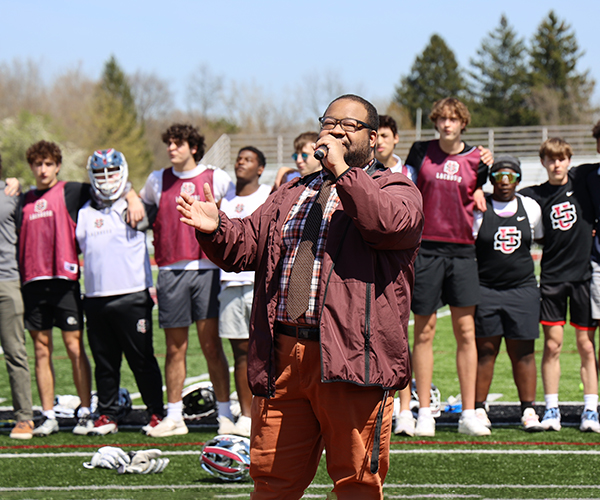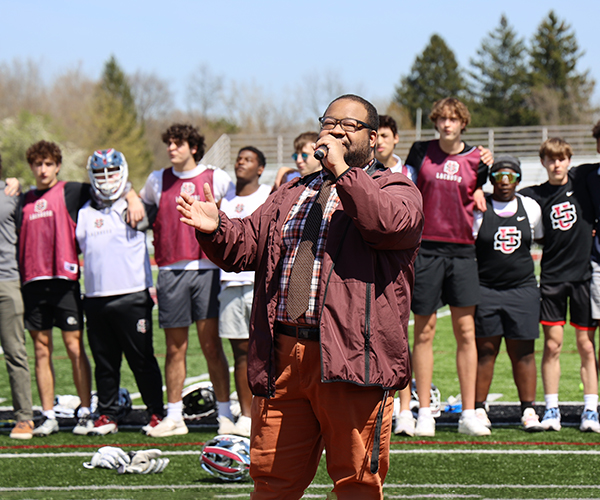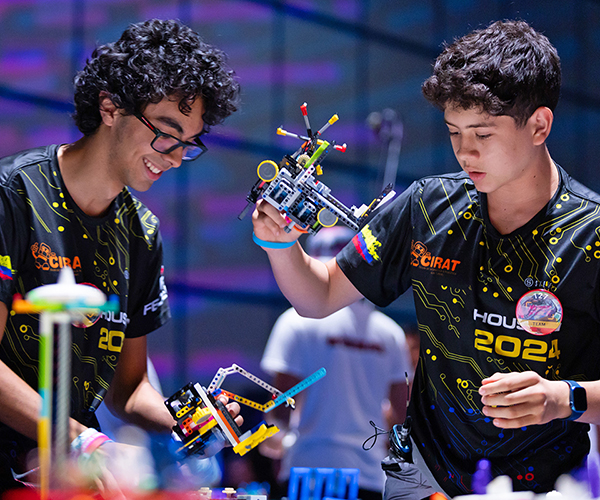Ohio has helped lead America into space. Twenty-five astronauts have come from the state, and behind the scenes, NASA's Glenn Research Center engineers, scientists and staff have become prolific inventors, playing roles in famous missions like Mercury, Apollo and the Mars rover missions.
Now, the Glenn Research Center is contributing to NASA's Artemis program, which is slated to run into the 2030s, by training the next generation of engineers and scientists from Ohio high schools through its STEM Engagement programs, such as the High School Engineering Institute and the High School Capstone program.
"We're working on our ambitious mission to send humans back to the moon through Artemis [program] and eventually take that to the next step of sending astronauts on to Mars," says Catherine Graves, director of NASA Glenn's Office of STEM Engagement. "And we're going to need all of the kids in kindergarten through 12th grade to help us get there. We're going to need their creativity, their innovation. We're going to need a lot of support from the next generation."
The High School Engineering Institute is in its inaugural year this July, with 60 rising juniors and seniors participating in one of three weeklong sessions. Of more than 300 applicants, 29 were from Ohio and 31 from across the country.
In each session, students work in teams of five as they face three engineering design challenges created by NASA engineers. Each challenge requires students to apply their creativity, knowledge and innovation in designing and testing their prototypes to solve a set problem.
NASA engineers provide their expertise by guiding students through an authentic work-based learning experience.
"[Students] will have guidance from our NASA experts. They're going to visit our world-class research facilities, and they're going to engage in career conversations with our NASA engineers," says Graves.
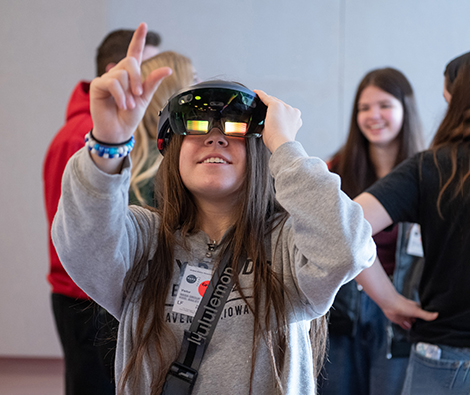
The design challenges are relevant to NASA Glenn's areas of expertise, including acoustic damping, power management and distribution, and simulated lunar operations.
In one challenge, students have to design acoustic liners to create the most effective sound-absorbing concept. The other challenges examine how to develop a smart power system for future space stations and explore the possibility of inventing tires that don't require air.
"The focus of the program is to provide students with an authentic STEM experience with a focus on addressing America's STEM workforce development needs, to broaden pathways for students to enter the aerospace industry, and to expand the skilled technical workforce," says Jerry Voltz, former U.S. Air Force engineer and current NASA education program specialist.
Voltz views the engineering institute as a boot camp compared to the High School Capstone program. The latter is a yearlong program that gives students more creativity and independence as they commit to one of the five design challenges offered by the Glenn Center.
Along with the three previous challenges listed with the engineering institute, Glenn is offering two design challenges in hydrology and remote sensing of harmful algal blooms. Students who pursue the capstone can continue to expand on their design throughout their high school career or switch to a new challenge each year.
The other major difference between the engineering institute and the capstone program is that NASA provides materials for the engineering institute, whereas in the capstone program, schools and students are expected to use existing resources available to their institutions.
"The fun thing about it is that we've been doing [the capstone program] since basically 2015, and we still have never seen a duplicate design,” says Voltz. “I mean, these kids are so creative with what they come up with, and that's what the engineers like. That's why they're hooked. They're like, 'I never thought to do it that way.'"
With the capstone's independence, students are expected to check in monthly with NASA experts to receive technical advice on their design and guidance to complete the capstone. They then present their findings and data back to NASA experts, which also helps create a portfolio for future internships and jobs.
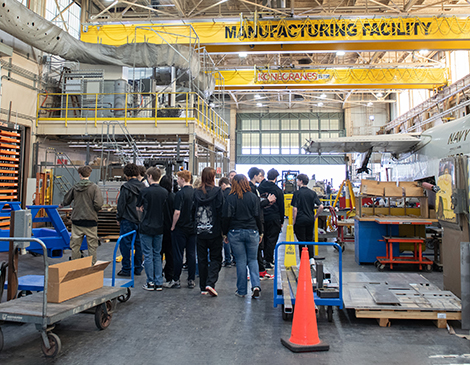
Besides gaining hands-on experience, both programs are designed to help students explore the type of engineering they want to pursue before attending college and possibly switching their major one or more times.
"They'll be exposed to electrical, mechanical and aerospace engineering, and [the programs] can help to refine which area they want to pursue," says Graves.
Exploration in a high school STEM program is what helped NASA engineer Christopher Morris find his future career as a mechanical test engineer in the propulsion systems laboratory.
“I kind of like designing a little bit [on] the project management side," Morris recalls, "and then going to college, it's figuring out, Yeah, mechanical engineering suits me.”
However, the greatest learning experience these programs offer for any future engineer is when things go wrong, and they have to go through the design process again.
"Engineers love it when things go wrong," says Graves. "If everything goes right, it's boring. 'OK, but then what was I going to do.' 'Oh, I didn't expect that. Why is that?' And they have these big discussions."
Advice from NASA Experts for Students Looking to Pursue STEM
Going to college and studying a major for two to three years only to find out that you don’t like it can pigeonhole you for the future. Being set on working for one employer after graduating and not landing that job can also be heartbreaking.
This is why NASA engineers and experts recommend those exploring STEM disciplines consider possible STEM careers that may not be a dream job, among other pieces of advice.
"I would say: don't be afraid to try something," says engineer Christopher Morris. "You may know nothing on the subject when you first step in, but no matter what you're going into, you can always find someone who has experience there who is willing to help you learn or can point you in the right direction."
Jerry Voltz is a former U.S. Air Force engineer and current NASA education program specialist. He found his love for teaching, but when he graduated from high school, he thought his career would be in something else.
"Upon graduating high school, I went into computer science," says Voltz. "It was really fun in high school, but it was really challenging. It was more formal, a little bit too formal for me in college."
Now that Voltz is helping the future generation of engineers, he recommends they take as many math classes as possible. He also wants students to know that someone out there values their talents.
"I've had experiences where they were dead set on working for NASA, and when that didn't happen, then they didn't want to go into a STEM career," says Voltz. "There's a lot of other STEM places, like Boeing and Lockheed [Martin]. There's a lot of people that could use your talents.”
Here in Northeast Ohio, students are well-positioned for college and future careers, with numerous opportunities to explore STEM fields.
"We're so fortunate to be located where we are in Cleveland with so many STEM opportunities all around us through the Great Lakes Science Center. We have the Nature Center; we have the Metroparks," says Catherine Graves, director of NASA Glenn’s Office of STEM Engagement. "There's just so many opportunities, not only through NASA, but throughout our region to be involved in STEM. I encourage kids to take advantage of all of that."
For more updates about Cleveland, sign up for our Cleveland Magazine Daily newsletter, delivered to your inbox six times a week.
Cleveland Magazine is also available in print, publishing 12 times a year with immersive features, helpful guides and beautiful photography and design.


